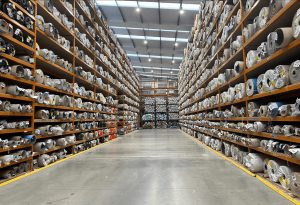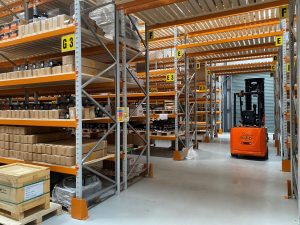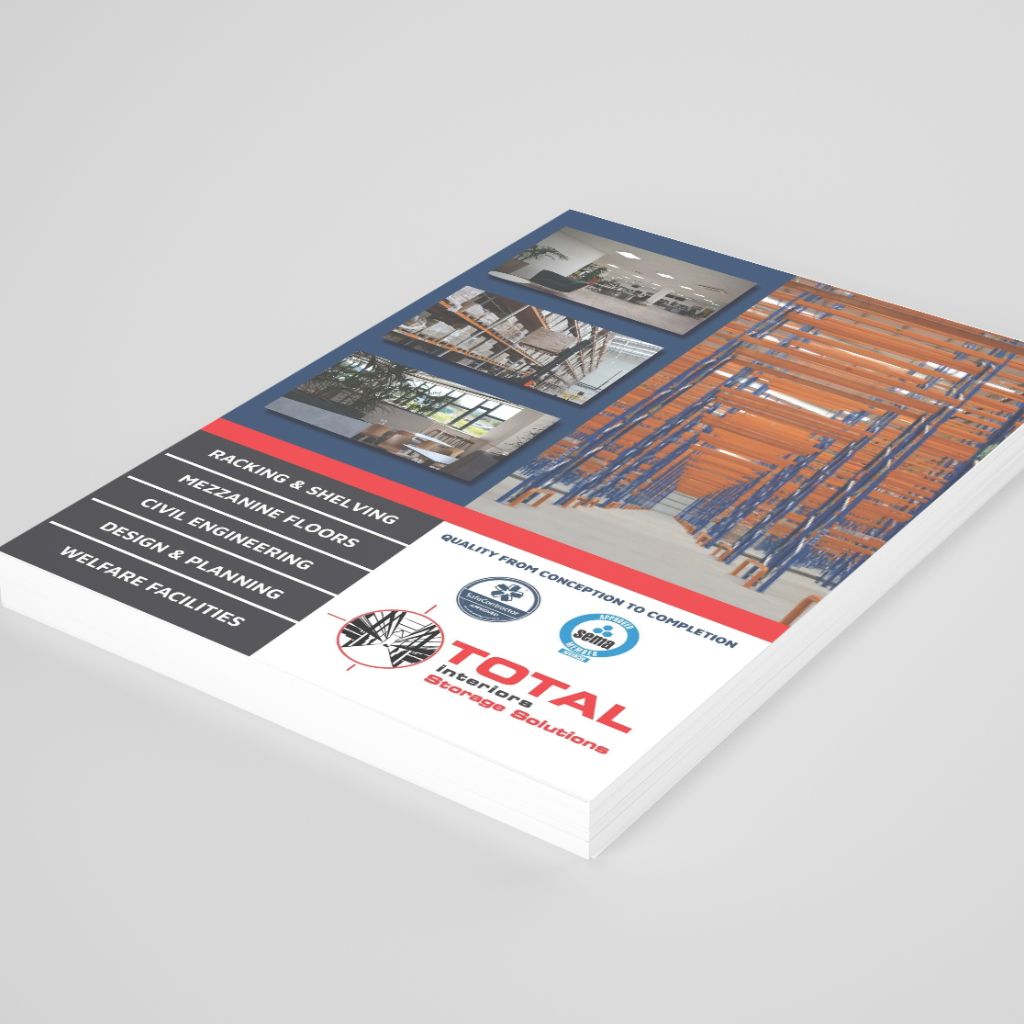Running a builders merchant isn’t just about having the right products—it’s also about having the right setup to store, organise, and access them efficiently. And that’s where racking for builders merchants plays a crucial role. Whether you’re handling timber, pipework, bags of aggregate, or sheet materials, the right racking system ensures safety, maximises floor space, and improves productivity.
In this detailed buying guide, we’ll walk you through the key racking types tailored to builders merchants—timber racking, vertical racking, cantilever systems, and bulk storage—plus smart layout tips and modular storage solutions to futureproof your setup.
Why Builders Merchants Need Specialist Racking Systems
Builders merchants deal with a unique mix of bulky, long, and heavy stock—from scaffold boards to plasterboard, paving slabs to lengths of copper pipe. Generic shelving just doesn’t cut it.
Here’s why investing in a purpose-built racking system is vital:
- Improved product visibility for quick and easy picking
- Safe storage of heavy, awkwardly shaped items
- Efficient use of vertical space to free up floor area
- Modular flexibility to scale with business growth
The right racking isn’t a one-size-fits-all solution—it’s about choosing the right types and configurations to suit your product range, site layout, and customer flow.
1. Timber Racking – Strong, Accessible, and Built for Length
Best for: Sawn timber, sheet materials, mouldings, fence posts, and similar long products.
What it is: Timber racking typically consists of horizontal arms or tiers designed to support long items flat and off the floor. These racks are either wall-mounted or freestanding and often adjustable to cater for different timber lengths and thicknesses.
Why it works:
- Reduces bending and warping of timber
- Keeps stock tidy and off the floor
- Easily accessible with a forklift or by hand
Pro Tip: Opt for a double-sided timber rack if you’re placing it in the centre of your yard or warehouse for walk-around access.
2. Vertical Racking – Ideal for Upright Storage of Long Materials
Best for: Pipes, battens, conduit, trims, plastic lengths, and lightweight rods.
What it is: Vertical racking stores products upright rather than horizontally, saving floor space and making picking quicker, especially for lighter items.
Advantages:
- Great for separating different lengths or diameters
- Easier to grab and go—no lifting off layers
- Perfect for front-of-house display areas
Pro Tip: Add divider arms to stop items falling or leaning dangerously. Great for improving safety and orderliness.
3. Cantilever Racking – Heavy Duty and Hugely Versatile
Best for: Timber packs, plasterboard, pipes, steel bars, and bulky, awkward loads.
What it is: Cantilever racking uses horizontal arms extending from a central column—without vertical obstructions—making it perfect for long, oversized materials.
Why it’s a game-changer:
- Load and unload with forklifts from the front
- Available in single- or double-sided configurations
- Adjustable arm height for mixed product sizes
Modular options: Cantilever systems are easily extended, making them ideal for growing merchants. You can add arms, bays, and even roof canopies to create weatherproof outdoor storage.
Bonus tip: Go for galvanised finishes for outdoor use, especially in the UK’s unpredictable weather!
4. Bulk Storage Racking – For Pallets, Bags, and Big Loads
Best for: Cement bags, aggregates, insulation rolls, pallets, and large volume items.
What it is: Think of this as industrial-sized shelving. Bulk storage racking features wide bays, often pallet-ready, and can be configured to suit manual or forklift picking.
Key benefits:
- Great for storing palletised stock or loose bags
- Improves warehouse flow and order picking
- Supports heavy-duty storage needs
Add-ons worth considering:
- Mesh decking for non-palletised items
- Safety bars and rack protectors to reduce impact damage
- Label holders and signage to keep aisles clearly marked
Smart Layout Tips for Builders Merchants
So, you’ve picked the right racking—now it’s time to think about layout. A poorly arranged yard or warehouse can slow down operations, frustrate staff, and even create safety hazards.
Here’s how to lay it out smartly:
1. Prioritise High-Volume Items
Place your best-sellers (like timber or plasterboard) near the front or loading bay for faster picking and restocking.
2. Zone by Product Type
Use distinct areas for timber, metal, aggregates, fixings, and so on. This makes stock easier to locate and reduces traffic congestion.
3. Leave Room for Machinery
Ensure aisles are wide enough for forklifts and pallet jacks. Leave turning areas near corners or racking ends.
4. Use Vertical Space Wisely
Stack up, not out. Higher racking with safety rails and stable loading platforms can triple your usable space.
5. Plan for Expansion
Use modular racking that can grow with you—whether that’s extra arms for cantilever racking or new bays for bulk storage.
Modular and Scalable Racking Systems
One of the best things about modern builders merchants racking is that it doesn’t have to be a fixed structure forever. Many suppliers (including Total Interiors Direct!) offer modular systems that can be adapted over time.
Why go modular?
- You can start small and build up
- Easily reconfigure based on seasonal stock changes
- Add weather protection, signage, or automation later
- Reduces upfront costs with phased investment
If you’re opening a new branch or revamping your warehouse, modular racking offers future-proof flexibility that fixed shelving just can’t match.
Safety Considerations
Let’s not forget safety—it’s a big deal. Here are a few quick reminders:
- Make sure all racking complies with SEMA and UK HSE guidelines.
- Conduct regular inspections, especially on cantilever arms and upright supports.
- Train staff on safe loading/unloading procedures.
- Add visible load signs to each bay or section.
Final Thoughts – Invest in Racking That Works as Hard as You Do
Choosing the right racking for builders merchants isn’t just about storage—it’s about smarter workflows, safer sites, and future-ready flexibility. From cantilever to vertical racking, and from layout tips to modular options, getting it right can save you money, time, and headaches in the long run.
At Total Interiors Direct, we specialise in tailored racking systems for builders merchants across the UK. Whether you’re refurbishing an old yard or setting up a brand-new depot, our experts can design, supply, and install the right solution from the ground up.
FAQs
Q: What's the best type of racking for timber?
A: Horizontal timber racking or cantilever racking works best, depending on whether you’re storing single lengths or full packs.
Q: Can racking be used outdoors?
A: Yes, but make sure to use galvanised or weatherproof systems, especially for cantilever or bulk storage outdoors.
Q: Do you need planning permission for external racking?
A: It depends on the height and location. It’s best to check with your local council or planning authority.
Q: How do I know what load capacity I need?
A: Always calculate the maximum load per level and per bay. Our team can help you assess this based on your stock.
Still Got Questions? Let's Chat!
Need help designing your racking layout or choosing between systems? Get in touch with Total Interiors Direct for expert advice, site surveys, and installation support.
And remember, smart storage isn’t an expense—it’s an investment in smoother operations and happier customers.
Recommended Reads:
👉 HSE’s Guide to Warehouse Safety
👉 SEMA Guidelines for Safe Racking Use


























